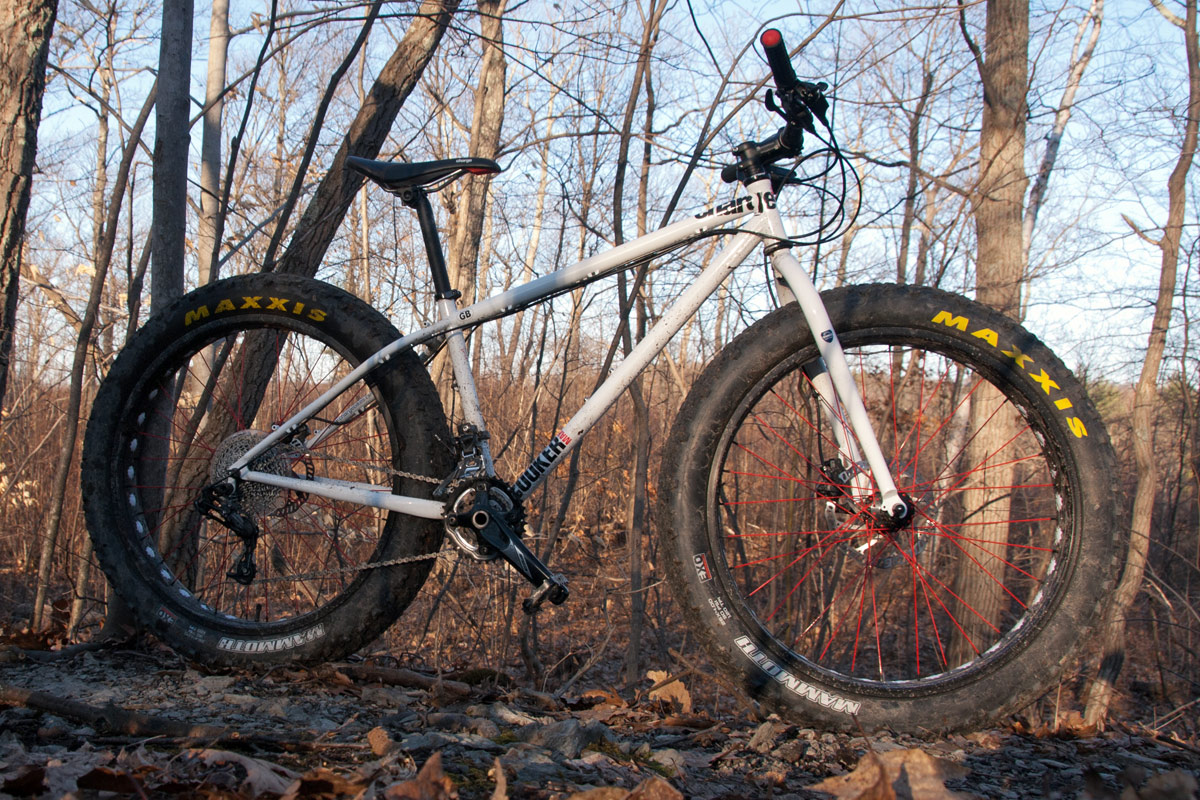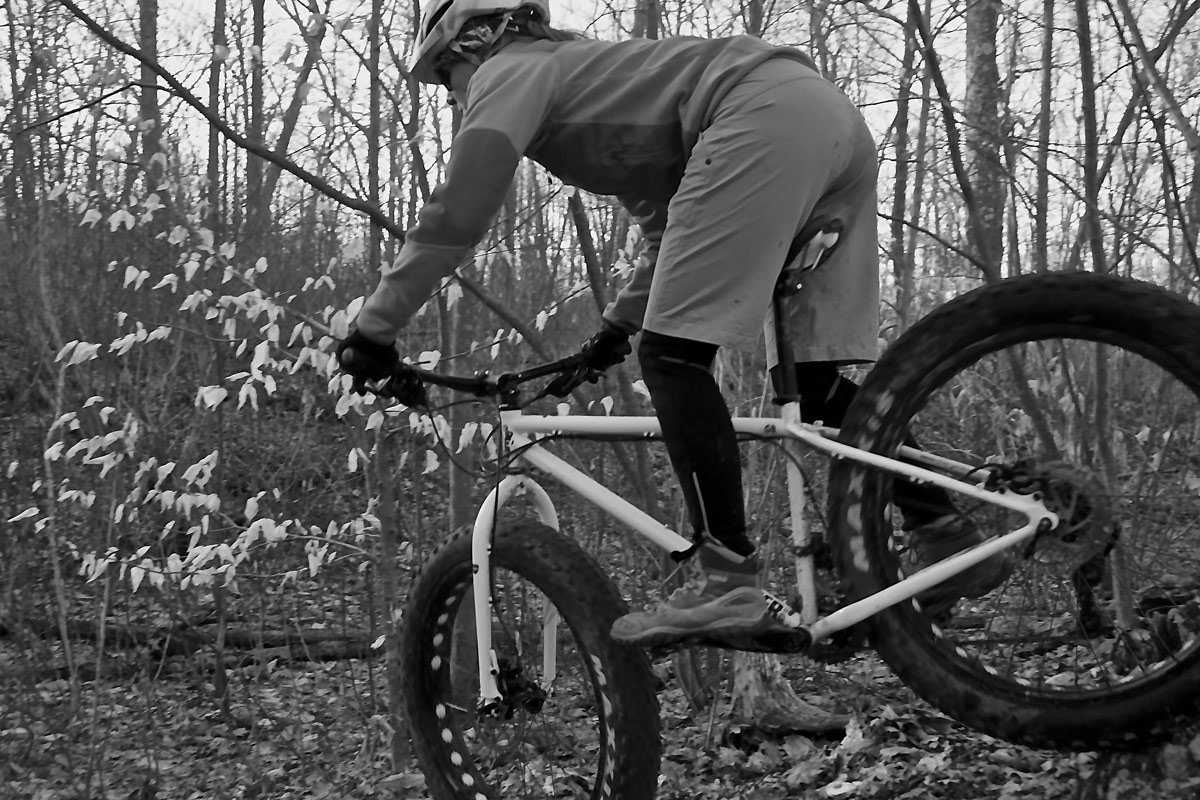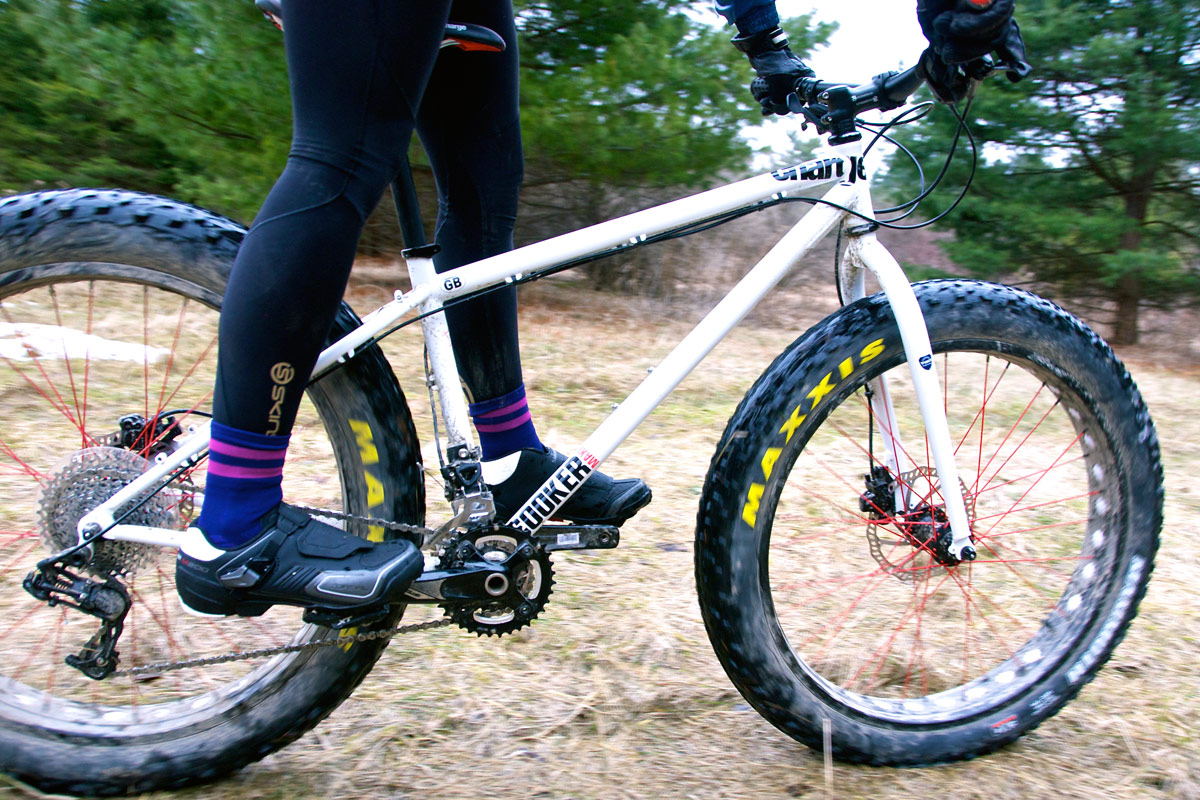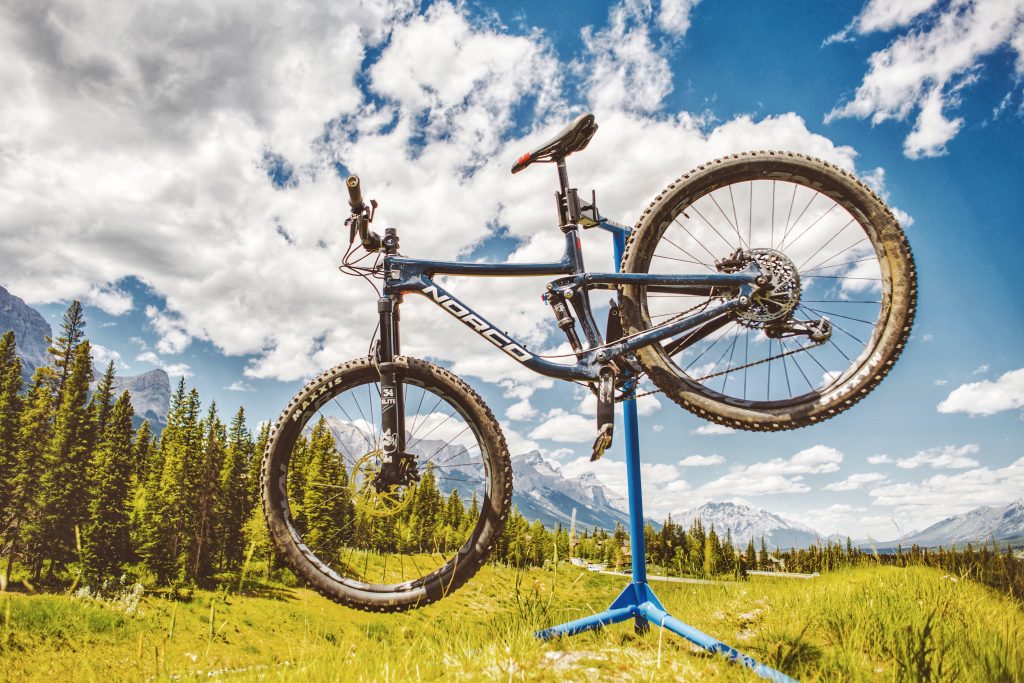Test Ride: Charge Cooker Maxi 2
Going off-road in all seasons, with the British bikemaker’s no nonsense fat bike

Fat bikes are quickly becoming a staple in every cyclist’s quiver. While the bikes have opened up winter riding to the masses, they aren’t just for snow anymore. Many riders are finding themselves drawn to their fat bike no matter the season or terrain. The ultra-wide tires boost a rider’s confidence on trail and make rolling over obstacles as easy as hopping a curb. With a focus on riding throughout the seasons, we took to the trails of Upstate New York with the simplicity-minded Charge Cooker Maxi 2.

After testing the full suspension Salsa Beargrease last summer, we were excited to test a bike that represents the core expression of the fat bike: rigid frame and form (ie: no suspension) with all the cushion in the tires. The Charge Cooker Maxi 2 is a plain and pure machine, which is the British bike manufacturer’s claim to fame. “Buying something as simple as a bicycle needn’t be the complex process of navigating unnecessary industry acronyms and technical jargon that it has lately become,” Charge proudly states on its site. While geeking out over gear ratios, frame geometry and carbon composite can be fun, it shouldn’t be a prerequisite to a good time on two wheels.
The Cooker Maxi 2 starts with a classic mountain bike frame made from quality Tange Infinity double-butted cro-mo steel with a Tange cro-mo rigid fork. Each type of steel is lauded for its high strength to weight ratio, meaning the bike will offer long-lasting durability while remaining maneuverable. In terms of frame geometry, the bike falls somewhere between aggressive forward-lean and upright. On trail, this intermediary geometry lends itself to riding in a range of conditions—from bombing leafy trails to traversing frozen lakes.

Tires are the defining component on a fat bike and the Cooker Maxi 2 comes equipped with 26” by 4” wide Maxxis Mammoth from Vee Rubber H-Billie with a wire bead construction. Sturdy in all conditions, the Mammoth accommodates a wide range of pressures for riding in variable surfaces. On hard pack snow, the bike handled brilliantly with unbelievable traction uphill and sturdy descending at high speeds on the snow downhill. On light ice, the bike did well, though studded tires are suggested for thick and slick ice. The only time riding on snow wasn’t enjoyable was in the wet melting deep snow. The bike sunk and was only rideable in close to freezing or below. But riding was only halted for a couple melting days before we were back on the bike in a mix of mud and slush.

“I’ve ridden in all conditions, but I think the sloppy time between seasons is best for the fat bike,” says professional mountain biker Aaron Chase. “It’s exciting to know that I can get out and ride no matter what the trails look like. It’s fun to slide around on the muddy trails and ride your bike in terrible conditions—it’s a new dynamic.” Chase recently impressed the bike world with his “Pivot Les Fat” fat bike video, assuring viewers that ripping trails on a rigid fat bike was not only possible—it could be as adrenaline-pumping as any bike. Our experience on the mixed snow and mud trails with the Maxi 2 was a positive one. Riding alongside a full-suspension 29er mountain bike, we found that the Maxi 2 was more capable in the mud stretches and snow patches than the normal sized bike tires. Downhill sections got a bit bumpy at speed but were nonetheless thrilling.

For our last transition to truly dry conditions, the tires worked a treat in the sand but lost steam on some of the rolling sections and switch-backs. While the extra-wide tires excel in the worst of the worse, their mass and heft come at a price on more favorable terrain. It was also more important to be clipped in on the trails. We wished for suspension forks and thinner tires (which is a new trend, Fat Bike frames with 27.5” plus wheels called Chubbies.) Yet the Maxi did everything the full suspension would do in a quintessential manner. With three conditions of riding, the Maxi 2 was solid bike, and since it is a such simple one, it would be easy to modify to maximize for all seasons. We agree with Chase who says, “Riders gotta ride! If there is any way that I can ride with my friends in the terrible Northeast winter, I’m in.” Given the advancing design and technology of tire sizes and suspension combinations, just about any weather and conditions are now rideable for the insatiable cyclist.
Pick up the Charge Cooker Maxi 2—fully kitted and ready to roll through anything—for $1,640 from Charge Bikes.
Images by Westy Kiefer












